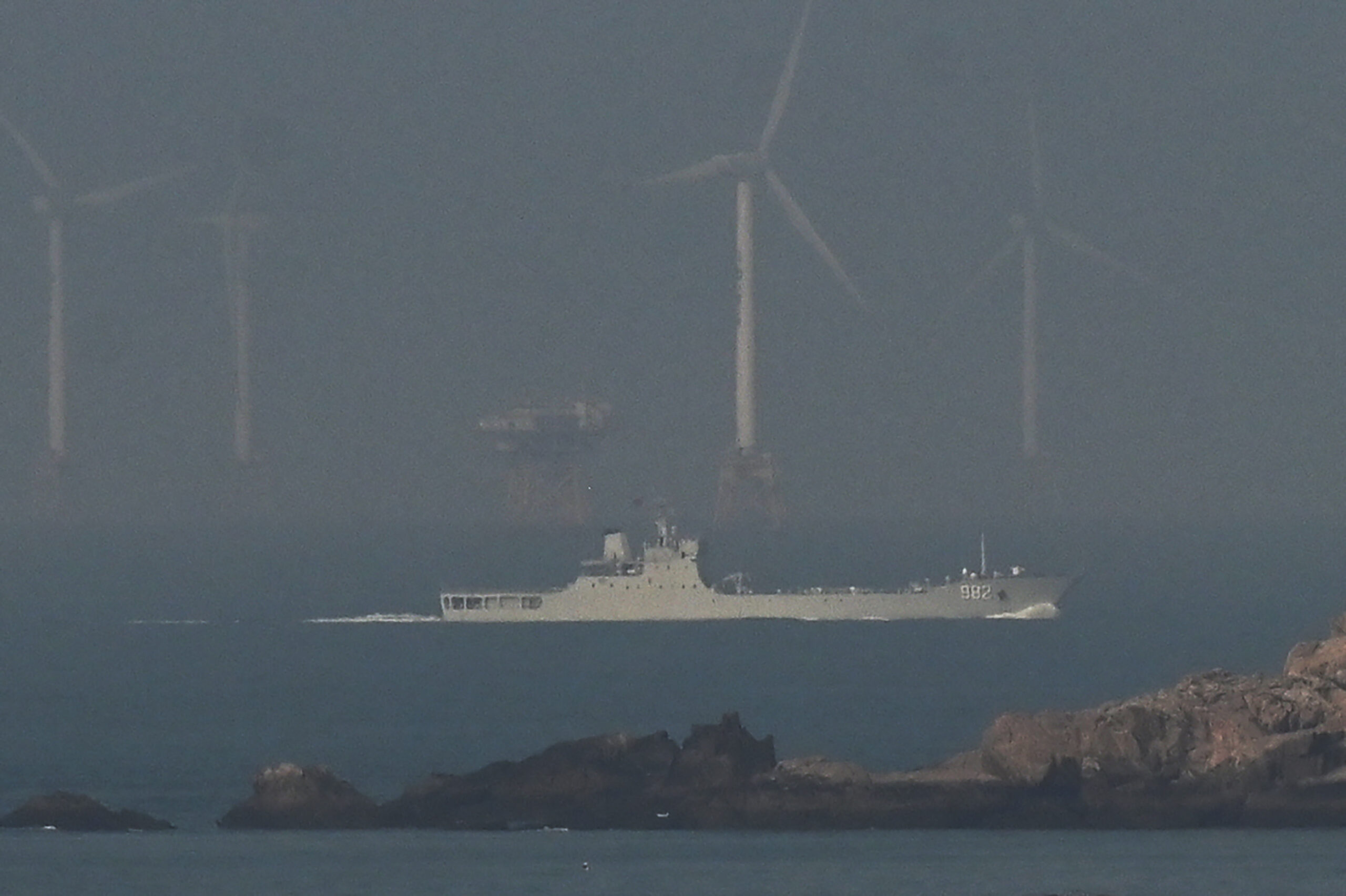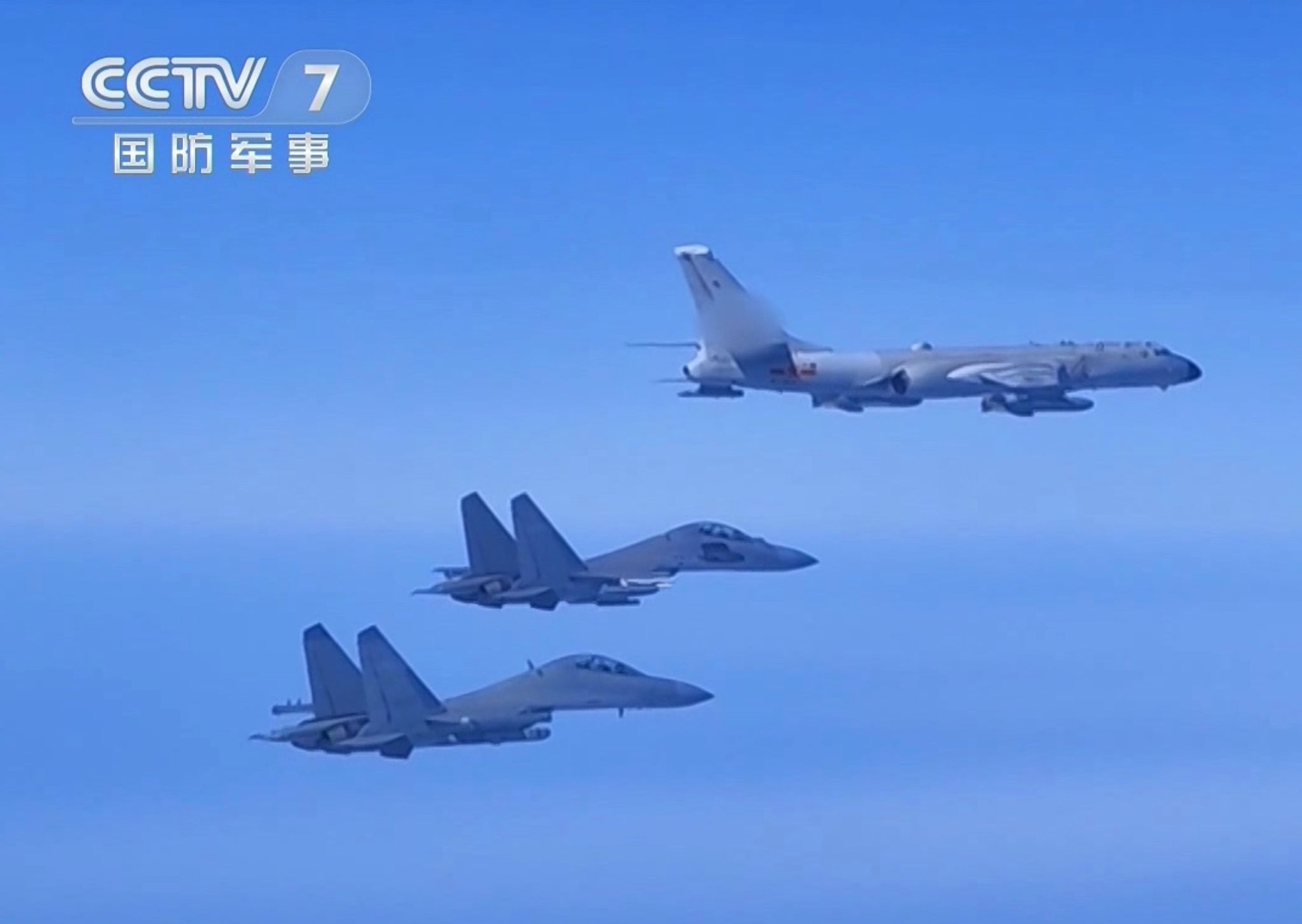The Chinese aircraft carrier Shandong joined large-scale maneuvers directed against Taiwan in recent days as Beijing conducted what it described as practice blockades of the island as well as so-called “precision strikes,” marking a notable escalation in terms of rhetoric. The aircraft carrier’s appearance came during a larger three-day exercise that also included other warships, plus missile and rocket forces on the mainland.
As the drills around Taiwan came to an end today, the PLA said it had “comprehensively tested” the capabilities of multiple units under combat conditions.
The People’s Liberation Army (PLA) exercise, which was reportedly codenamed Joint Sword, began on Saturday, after Taiwan’s President Tsai Ing-wen returned to Taipei after a meeting in Los Angeles with U.S. House of Representatives Speaker Kevin McCarthy.
“The troops in the theater are ready to fight all the time and can fight at any time, resolutely crushing any form of Taiwan independence separatism and foreign interference,” the PLA’s Eastern Theater Command said in a statement.
The People’s Republic of China views Taiwan as a rogue province that is fully within its sovereign territory. It has never ruled out the use of force to bring it under Beijing’s control in the future and, in recent years in particular, has undertaken increasingly complex large-scale military maneuvers in the Taiwan Strait and around the island.

The latest drill was one of the biggest to date, at least in terms of PLA aviation activity. According to Taiwan’s Ministry of National Defense, as of 6:00 P.M. local time today, there were 12 Chinese ships and no fewer than 91 military aircraft around the island. Those aircraft included J-15 carrier-based fighter jets operating from the Shandong, as well as J-16 and Su-30 Flanker multirole fighters, the J-16D electronic attack derivative of the Chinese-made Flanker, and H-6 bombers that are assessed to be capable of delivering nuclear weapons.

On at least one occasion, Chinese and Taiwanese warships came into relatively close proximity to one another, as evidenced by imagery released by both countries. A report from Reuters, citing an unnamed source familiar with the security situation in the region, said that the PLA conducted simulated attacks by aircraft and warships against “foreign military targets” in the waters off the southwestern coast of Taiwan.
Of the detected aircraft, 54 crossed the median line of the Taiwan Strait and entered Taiwan’s Southwest and Southeast Air Defense Identification Zones, or ADIZ.
It’s worth noting that Taiwan’s ADIZ covers not only the entirety of the strait but also portions of mainland China, too. As for the median line, this serves as a de facto boundary between Taiwan and the mainland. While crossing the median line is itself not an uncommon occurrence, the scale of such activity by the PLA has ramped up considerably in recent times.
Previously, the biggest number of aircraft to enter the Taiwan Strait in a single day was 68, recorded last August, as part of a series of drills coinciding with the visit to Taiwan by U.S. Speaker of the House Nancy Pelosi, which you can read more about here.
As for Taiwan, its Republic of China Armed Forces said they had “monitored the situation and tasked our assets to respond.” In an official statement, Taipei said it would “never relax” its efforts to strengthen combat readiness and would closely monitor the PLA missile forces as well as the movements of the Shandong.
For this latest round of maneuvers, China released an unusually detailed breakdown of the kinds of activities its armed forces undertook. According to a report on Chinese state television today, the aircraft involved in the drills included H-6 bombers armed with live missiles. These are said to have worked alongside warships to “form a multi-directional island-encompassing blockade situation.” This is a clear reference to one of the strategies that could be employed by Beijing were it go on the offensive against Taiwan, namely, an aerial and maritime blockade of the island with the aim of choking Taiwan into submission.
In one video released by the Eastern Theater Command on its WeChat instant messaging account, an H-6 bomber was shown flying over what was described as airspace north of Taiwan.
“The missiles are in good condition,” the narrator says. Next, another voice says: “Start the fire control radar, lock on the target,” while the video cuts to footage of a missile under the wing.
Although no actual missile launch is shown, the video does include one of the pilots preparing for what is described as a simulated attack, before pressing the launch button.
While multiple aircraft and warships have previously been involved in these Taiwan-related drills, the appearance of one of the two aircraft carriers active with the People’s Liberation Army Navy (PLAN) is notable.
According to the Japan Ministry of Defense, the Shandong was active in air operations in waters close to the Okinawan islands on Sunday. The same source stated that jet fighters and helicopters had been launched and recovered on the carrier 120 times between Friday and Sunday. At one point, the carrier — accompanied by three other warships and a support vessel — came within around 140 miles of Japan’s Miyako island.
The involvement of the Shandong in the Taiwan-oriented war games points to the growing power of Chinese carrier aviation in general. More specifically, it points to the likelihood that this, or another carrier would be available to launch fixed-wing operations by fighter jets from the east of Taiwan during hostilities, something that is far more complicated to achieve from the mainland. The combination of carrier aircraft and long-range bombers approaching Taiwan from the east makes the defense of the island a much more challenging proposition.
As well as PLA aircraft and naval vessels, the latest series of exercises also tested the country’s missile and rocket forces. On Sunday, the Chinese military said it conducted simulated precision strikes against Taiwan.
“Under the unified command of the theater joint operations command centre, multiple types of units carried out simulated joint precision strikes on key targets on Taiwan island and the surrounding sea areas,” Chinese state television reported on Sunday, adding that the PLA was continuing “to maintain an offensive posture around the island.”
Another video posted to WeChat by the Eastern Theater Command showed an animation of simulated attacks, with missiles fired from land, sea, and air into Taiwan. Two of the missiles were shown exploding in flames as they hit their targets. The video doesn’t appear to be technically accurate, but serves more as a general representation.
Taiwan’s Ministry of National Defense said that particular attention was being paid to the PLA Rocket Force for the duration of the maneuvers.
“Regarding the movements of the Chinese communists’ Rocket Force, the [Taiwanese] military also has a close grasp through the joint intelligence, surveillance and reconnaissance system, and air defense forces remain on high alert,” the ministry said.
The Taiwanese response to the maneuvers also included the deployment of launchers for Hsiung Feng series anti-ship/land attack cruise missiles in Pingtung county in the very south of the island, according to a report from Reuters.
While the drills are now over, they have once again shown that Beijing is increasingly willing to conduct significant shows of force in response to the visits of U.S. officials to Taiwan, or of their Taiwanese counterparts to the United States. Indeed, based on the fallout of U.S. Speaker of the House Pelosi’s trip to Taiwan last year, this would now seem to be something like a standard reaction.
At the same time, these kinds of maneuvers are ever more explicitly aimed at practicing for a potential future armed confrontation with Taiwan. As well as testing the PLA’s ability to establish a blockade around the island, China is now openly stating that its strike assets are practicing for precision attacks against Taiwan. This becomes even more ominous when considering that the PLA is known to train for decapitation strikes against Taiwanese leadership, hoping to cripple decision-making and thereby lead to a swift victory.
For the time being, the United States and the international community at large will no doubt be keeping a close eye on Chinese military exercises in the area, as well as any other indicators of a potential actual military operation. After all, it’s highly likely that any offensive directed against the island would be followed by a long string of large-scale exercises, which would then morph into a real invasion, for example.
In the meantime, Taiwan has said that it will respond calmly to any future PLA drills so as not to provoke a conflict. However, Beijing is clearly much less concerned about potential escalation — a position in keeping with its continued willingness to consider force to bring Taiwan back under its control.
Contact the author: thomas@thedrive.com
